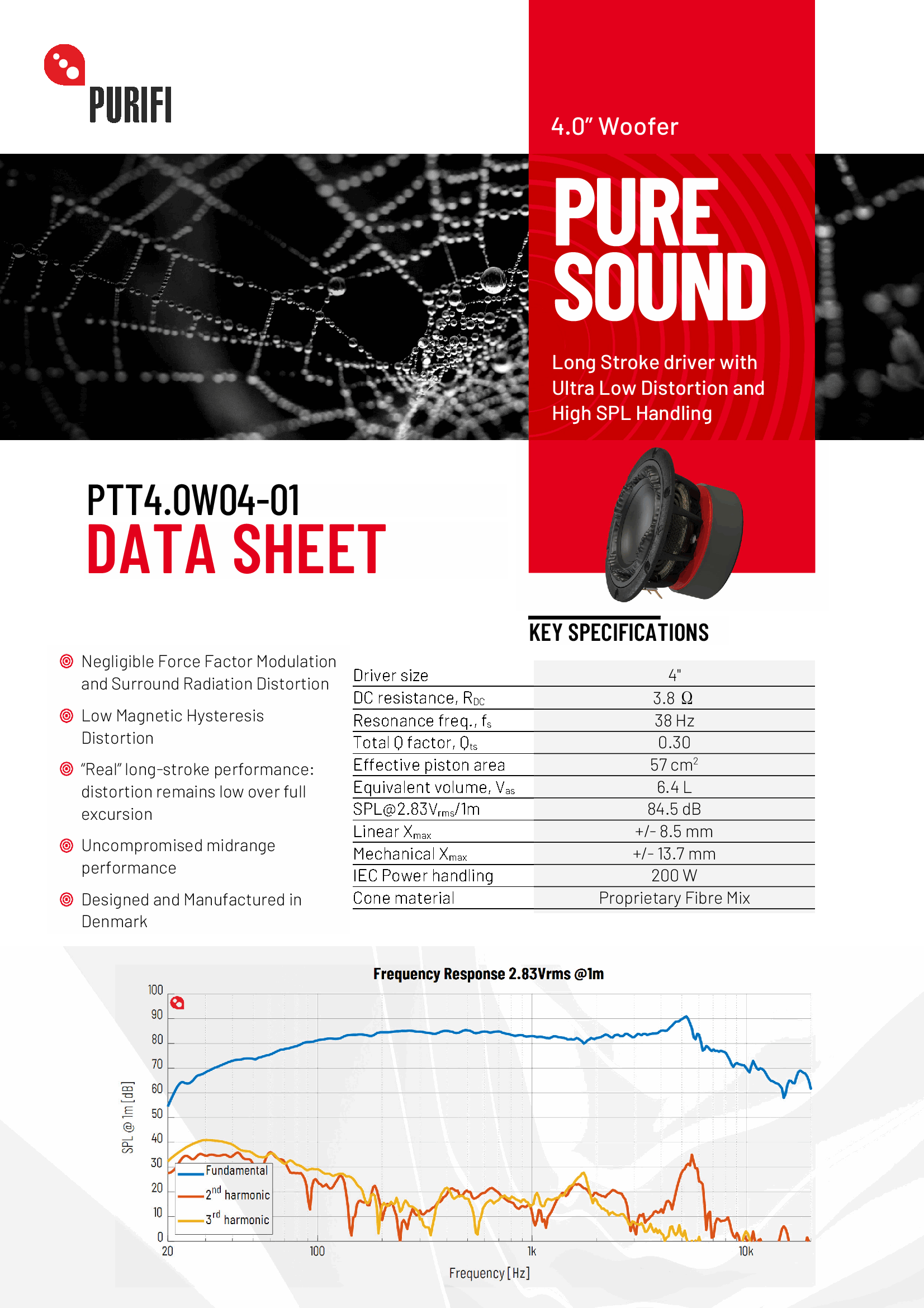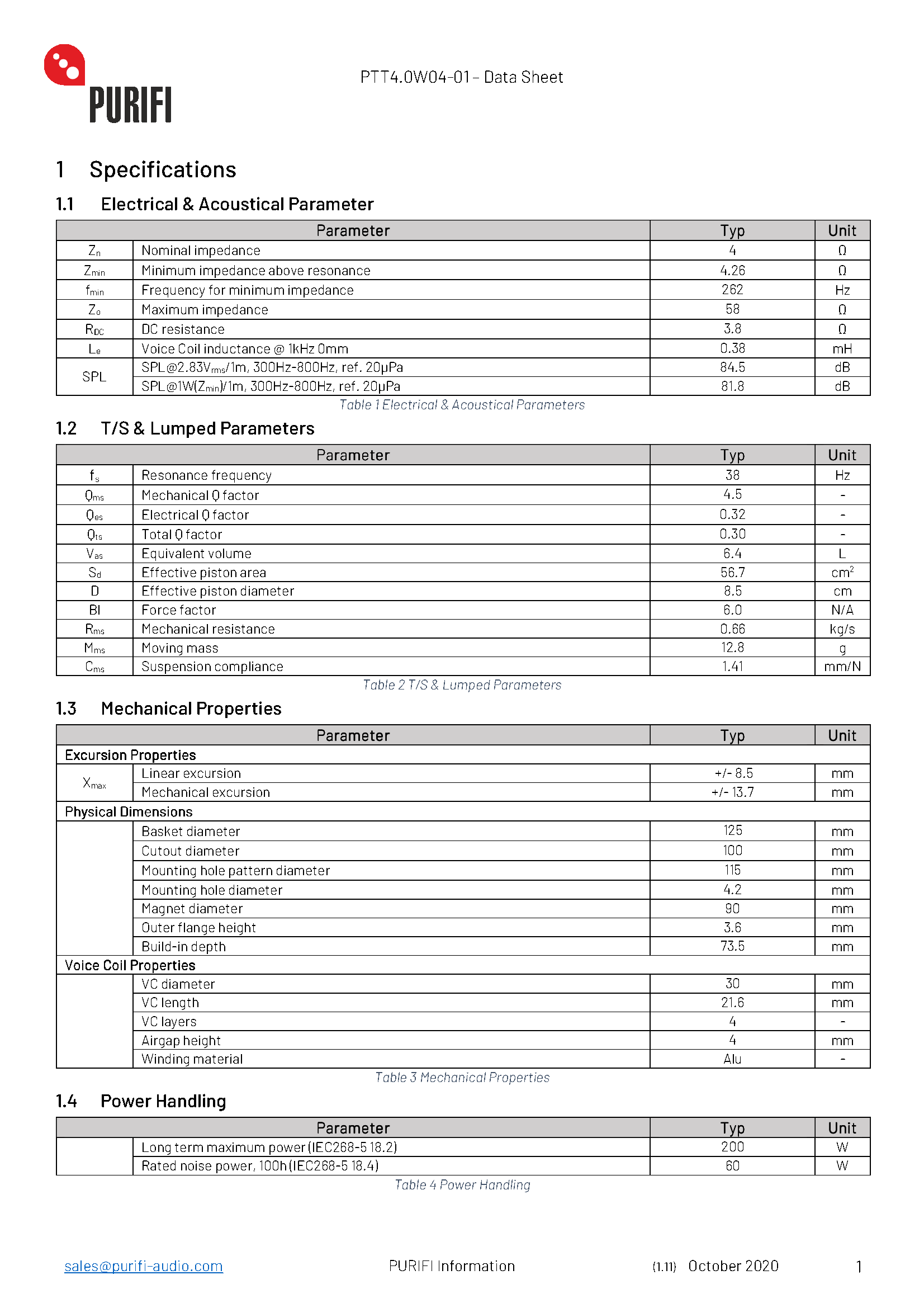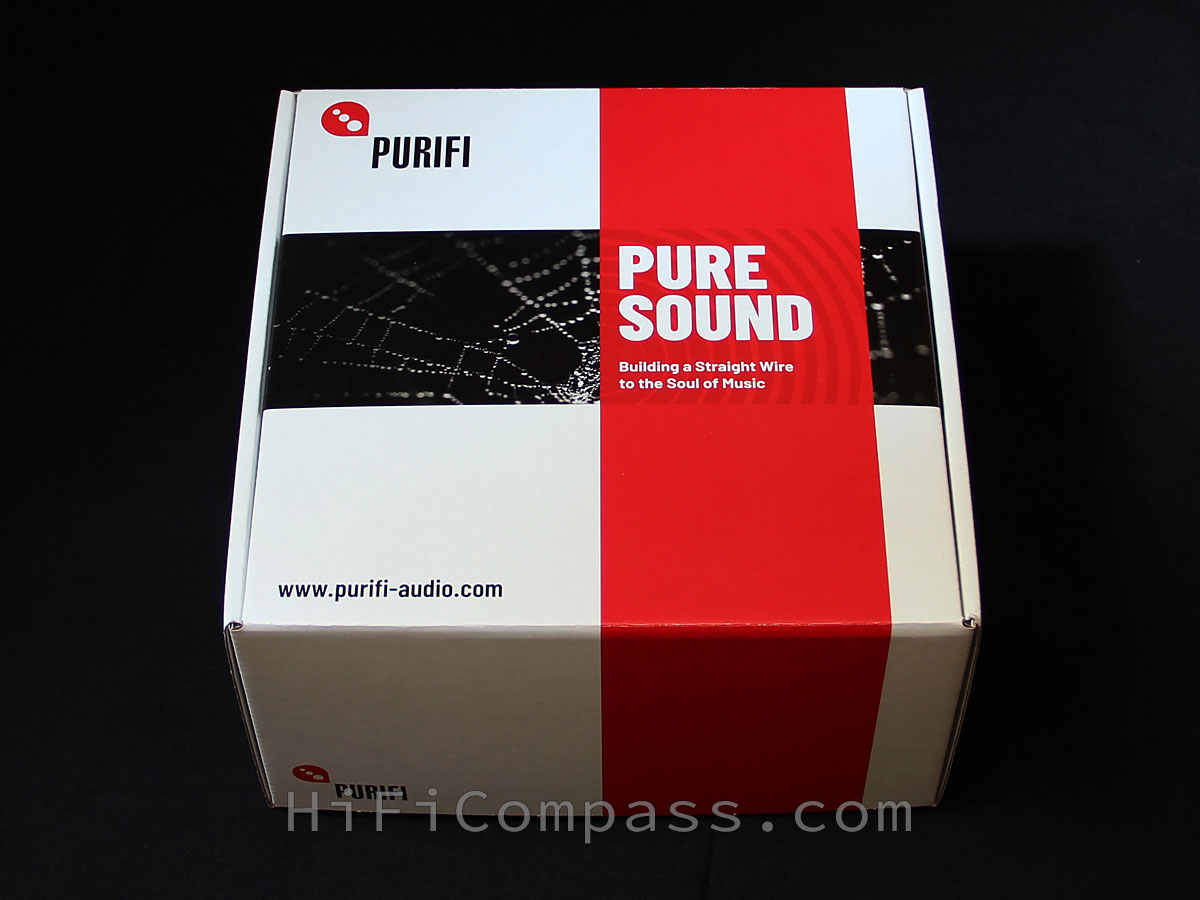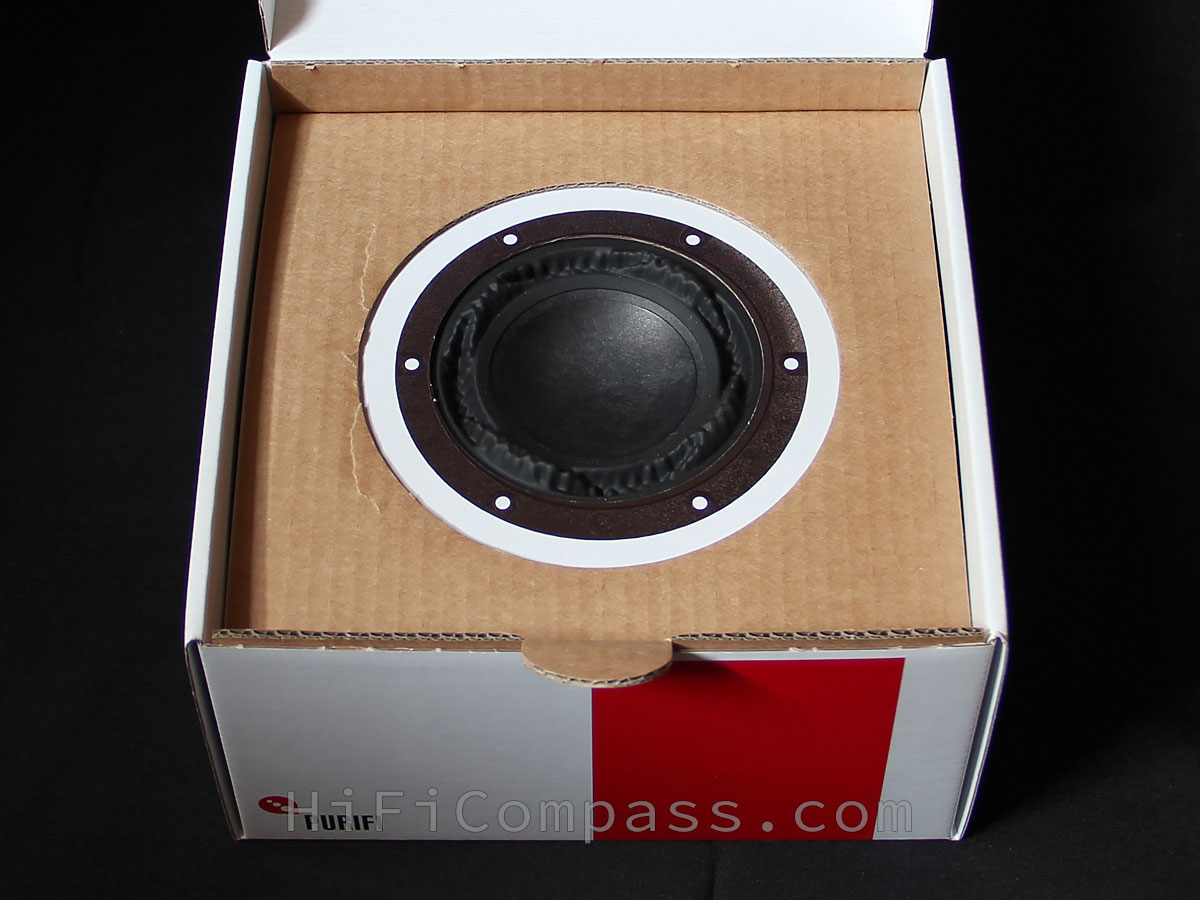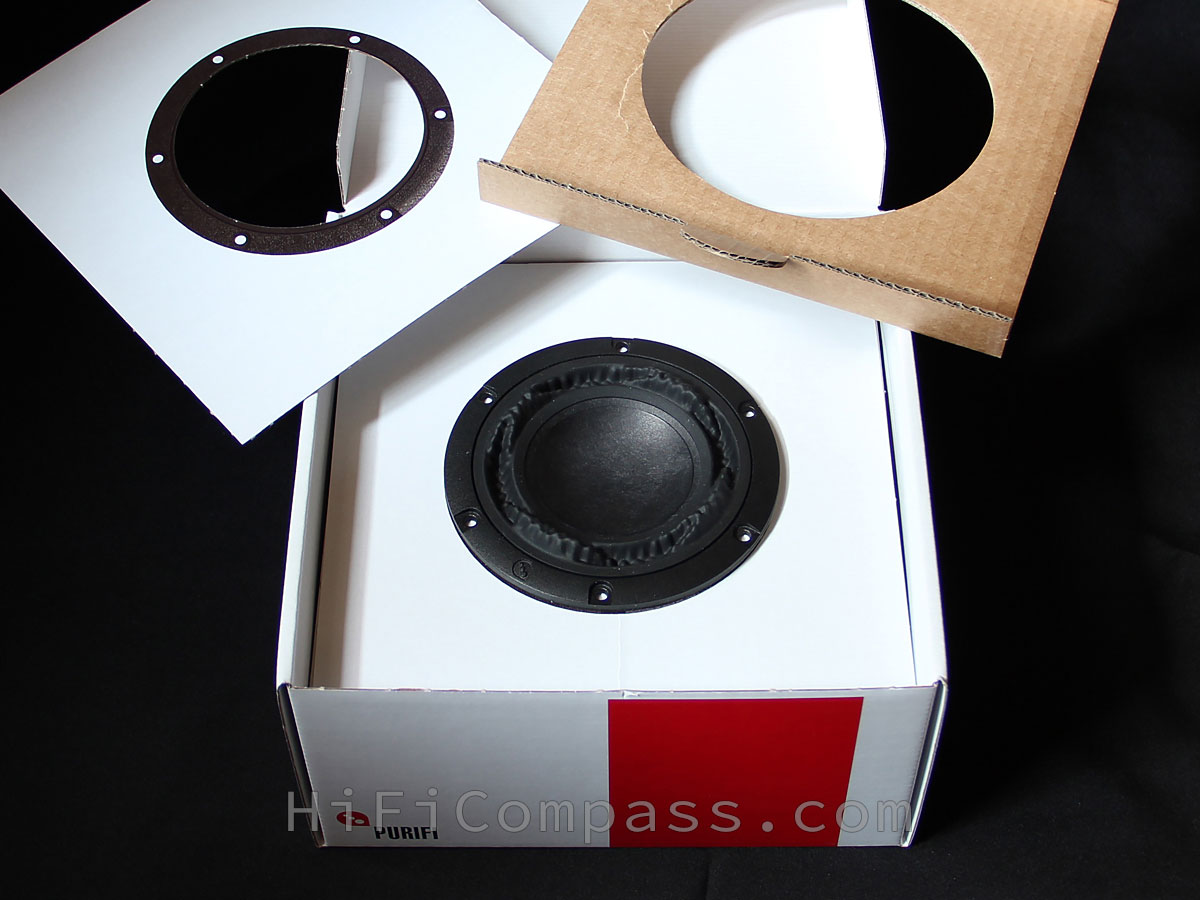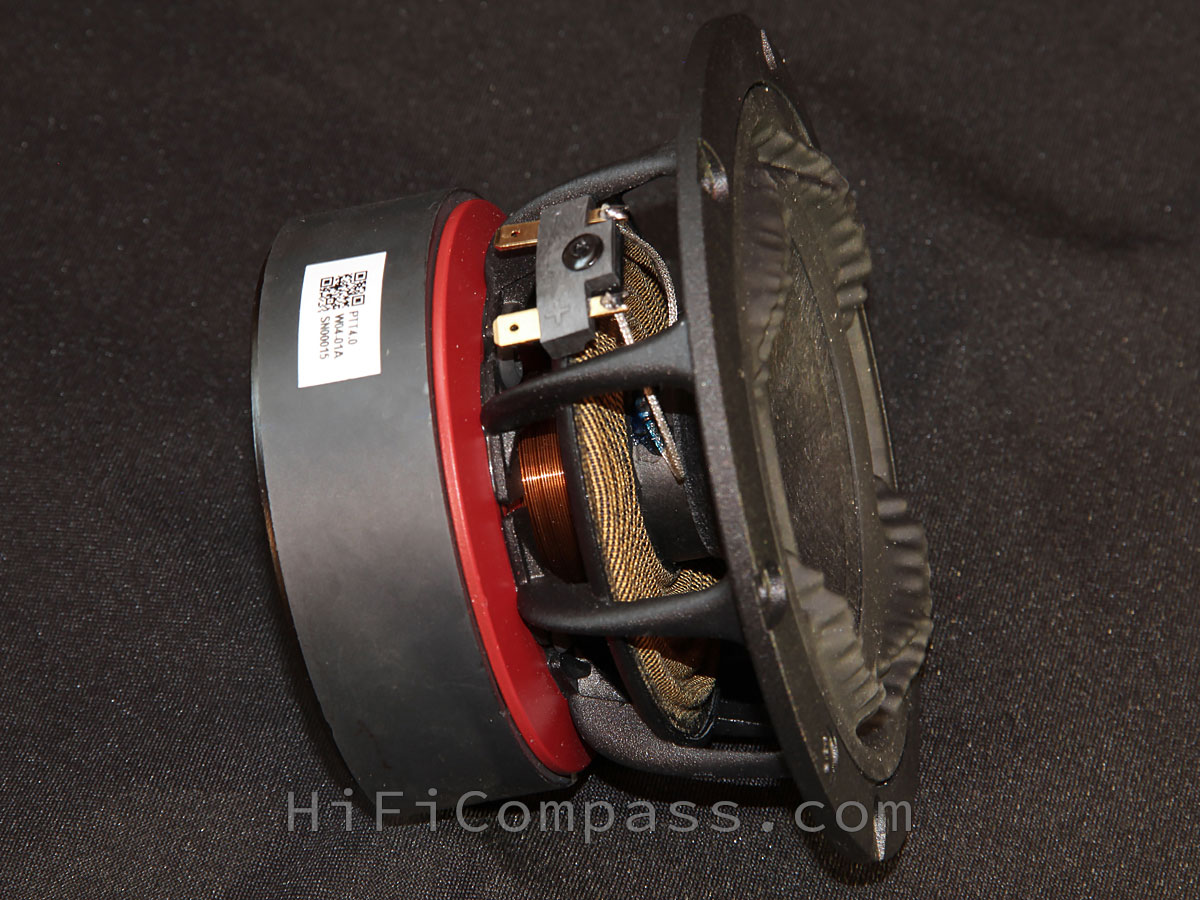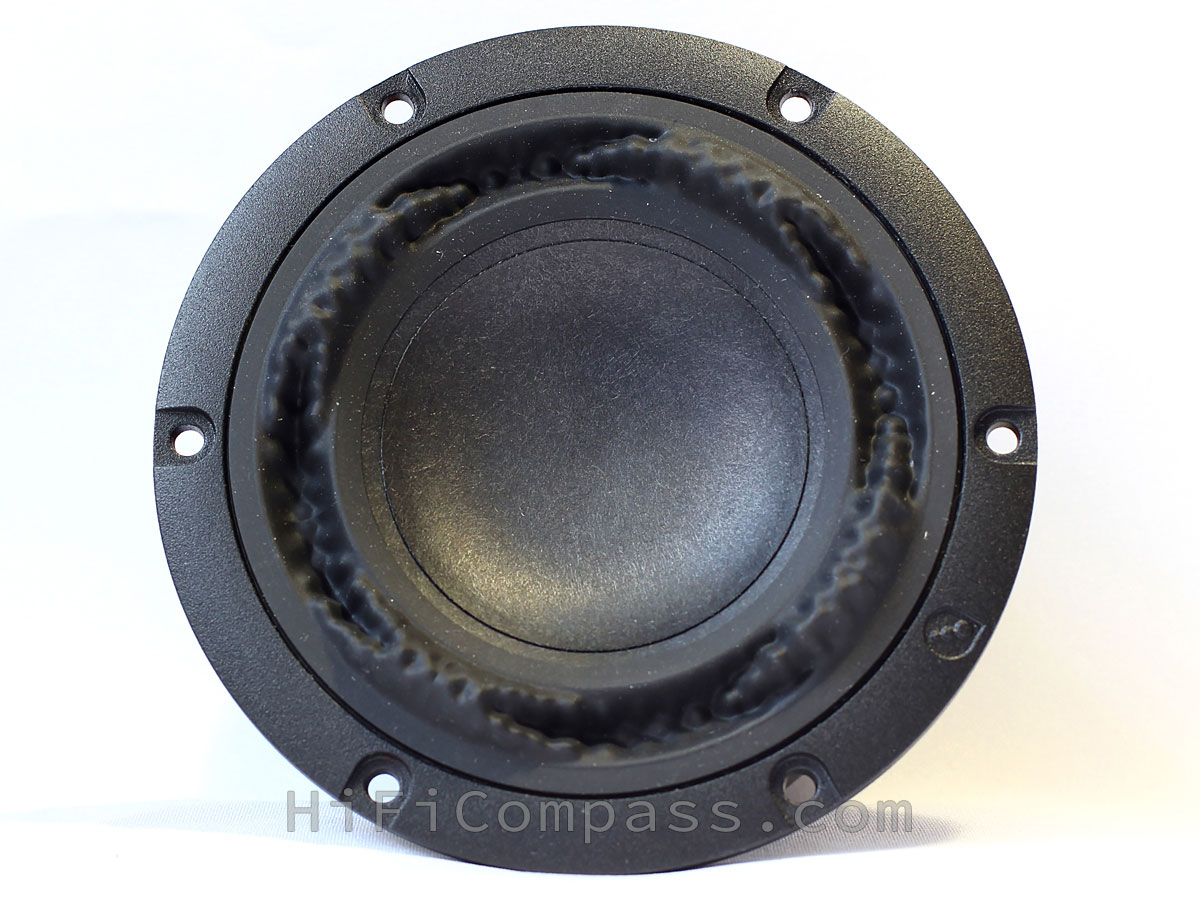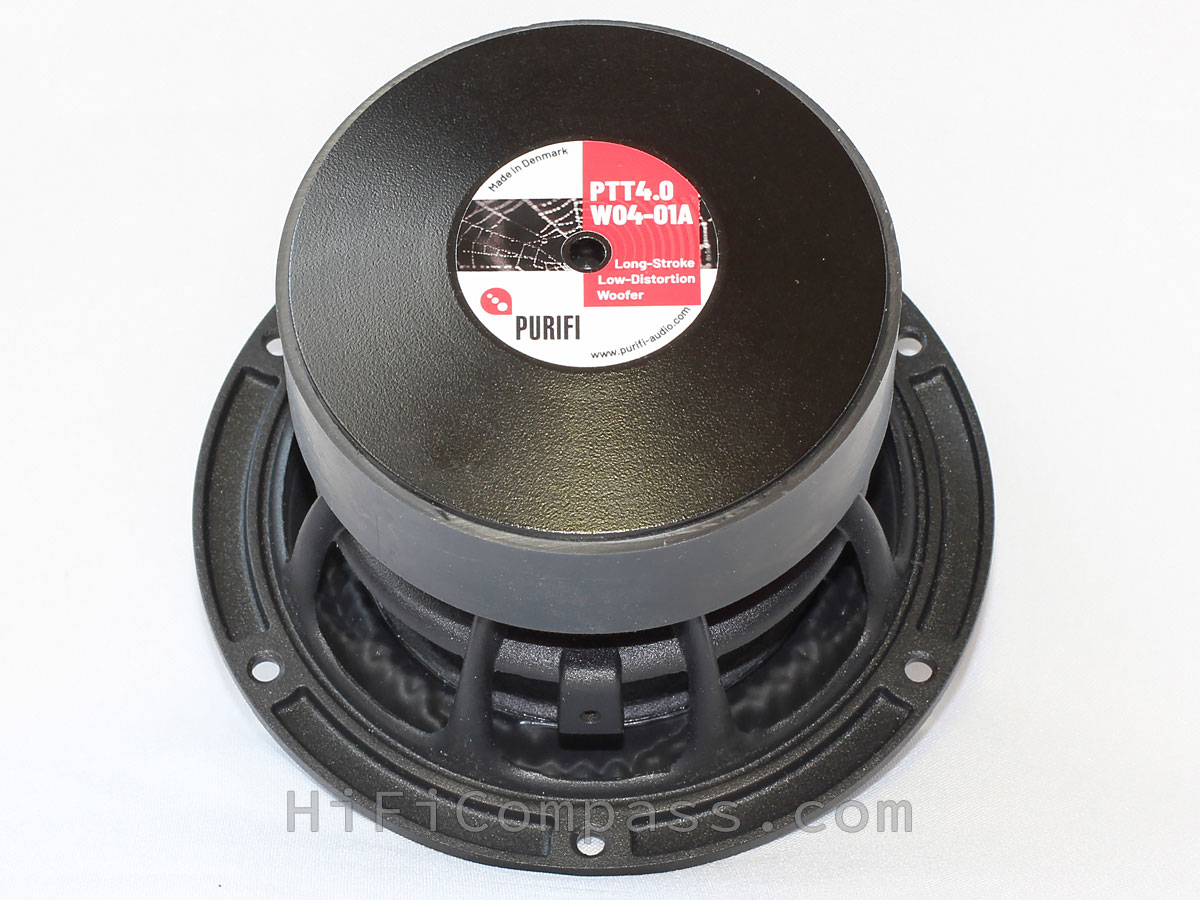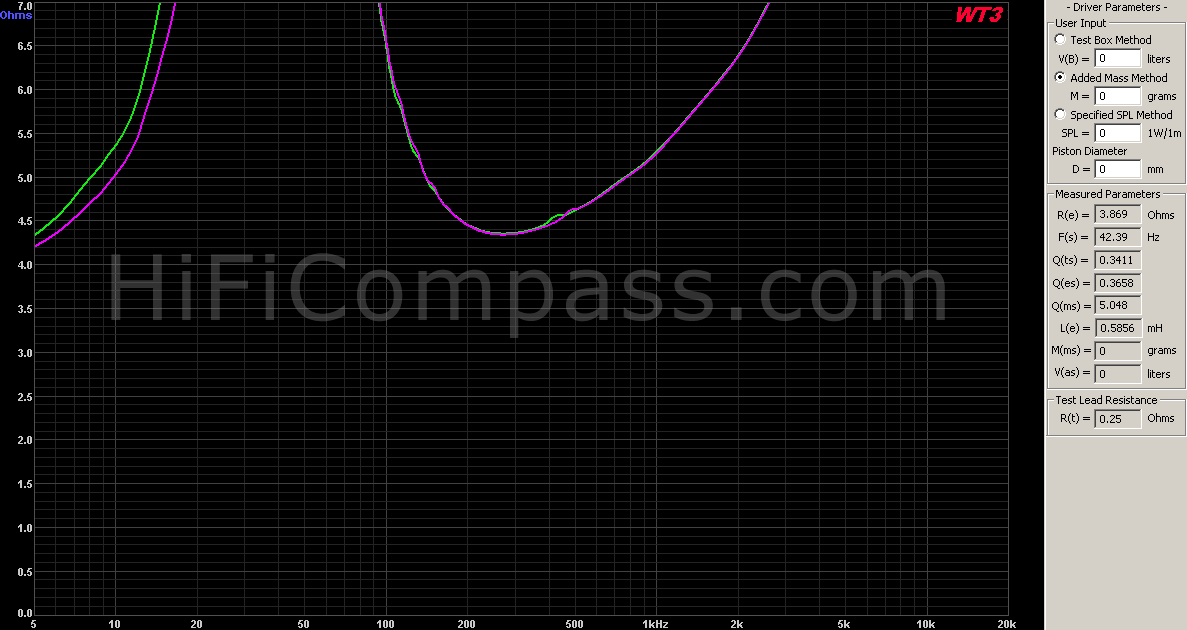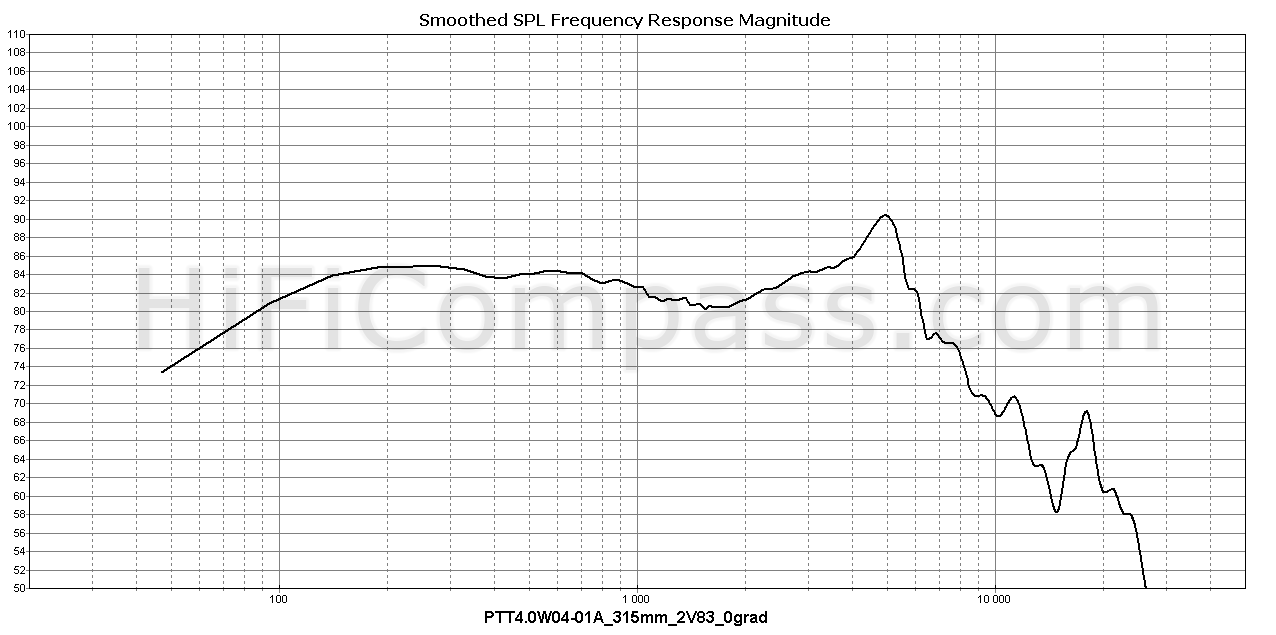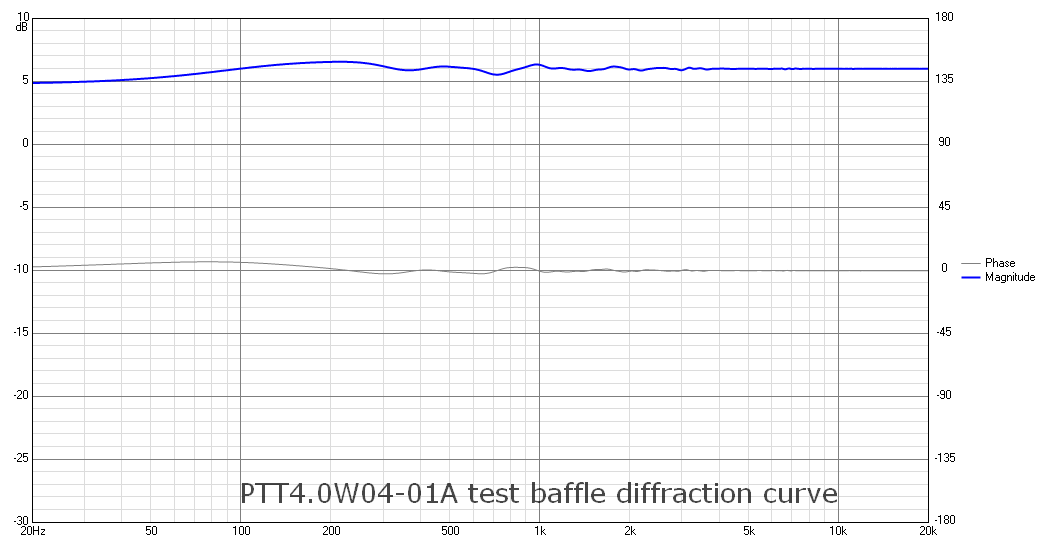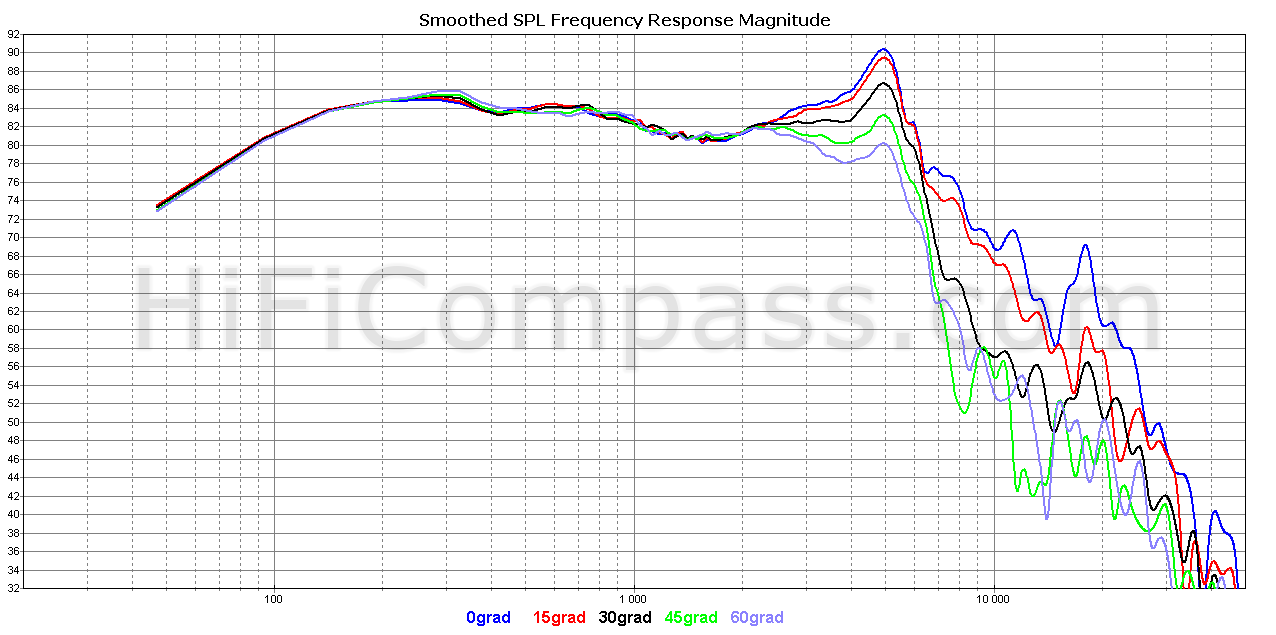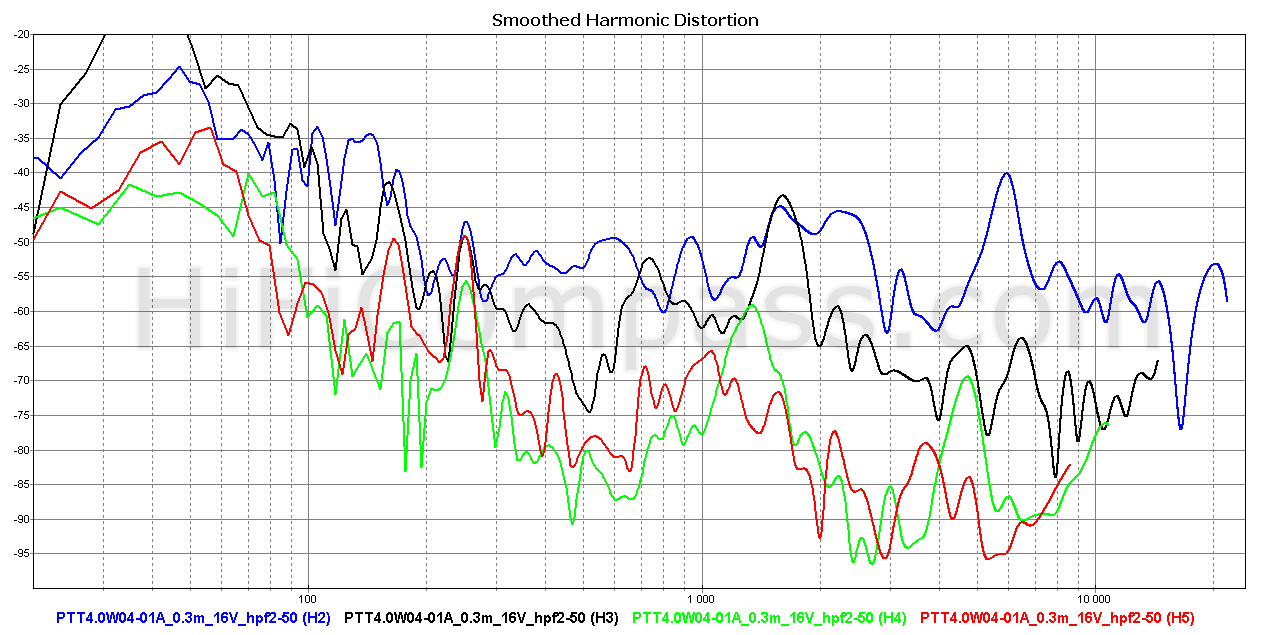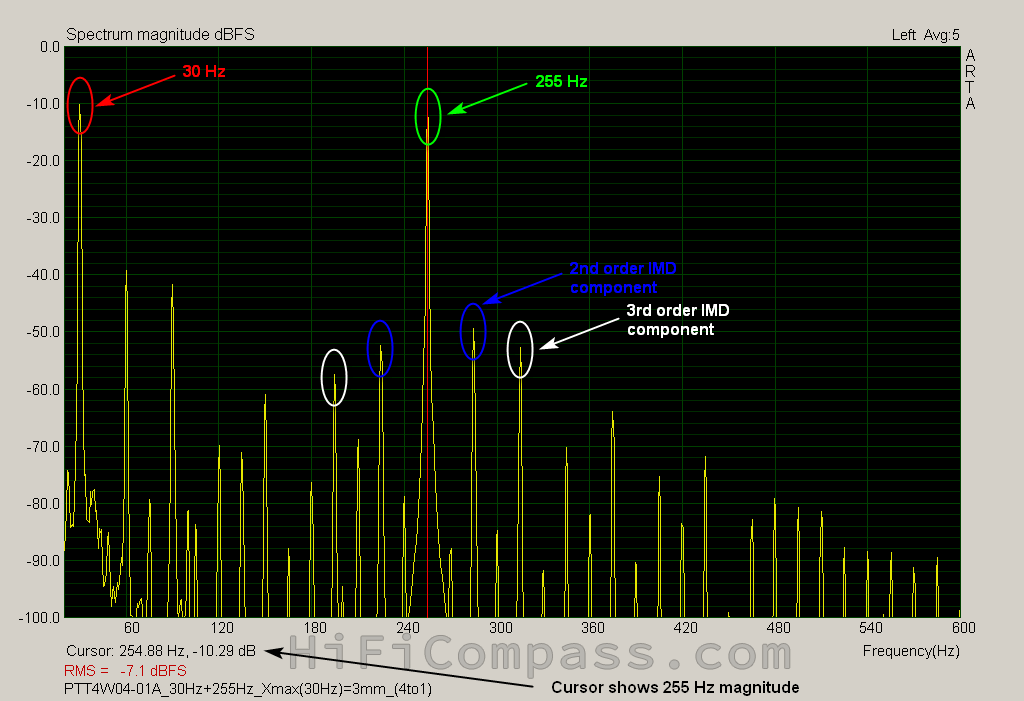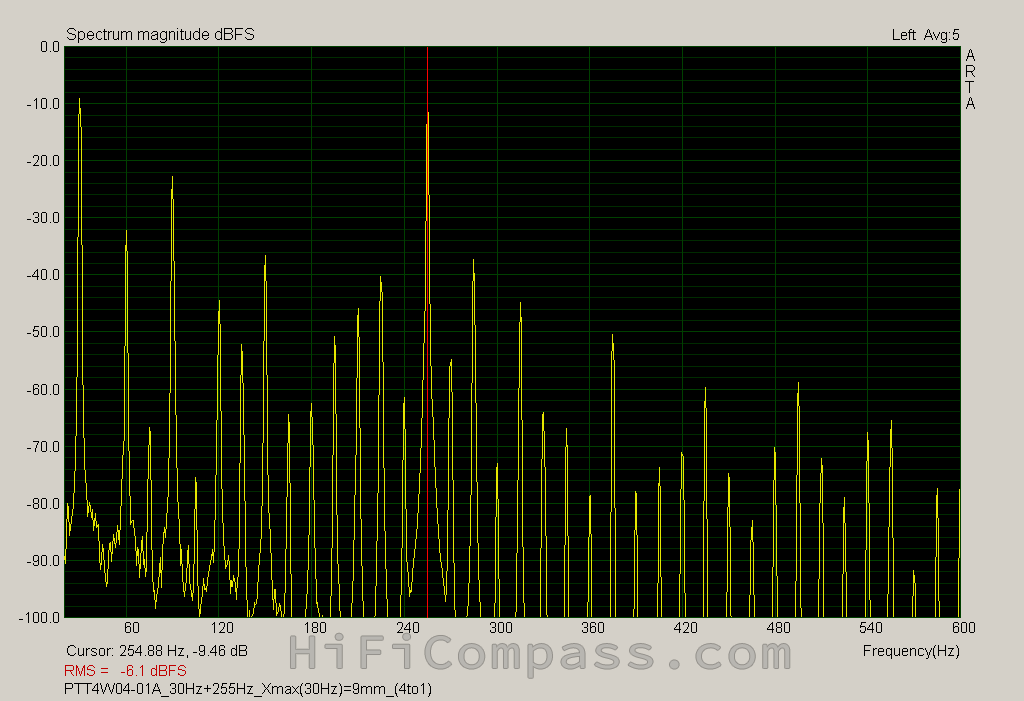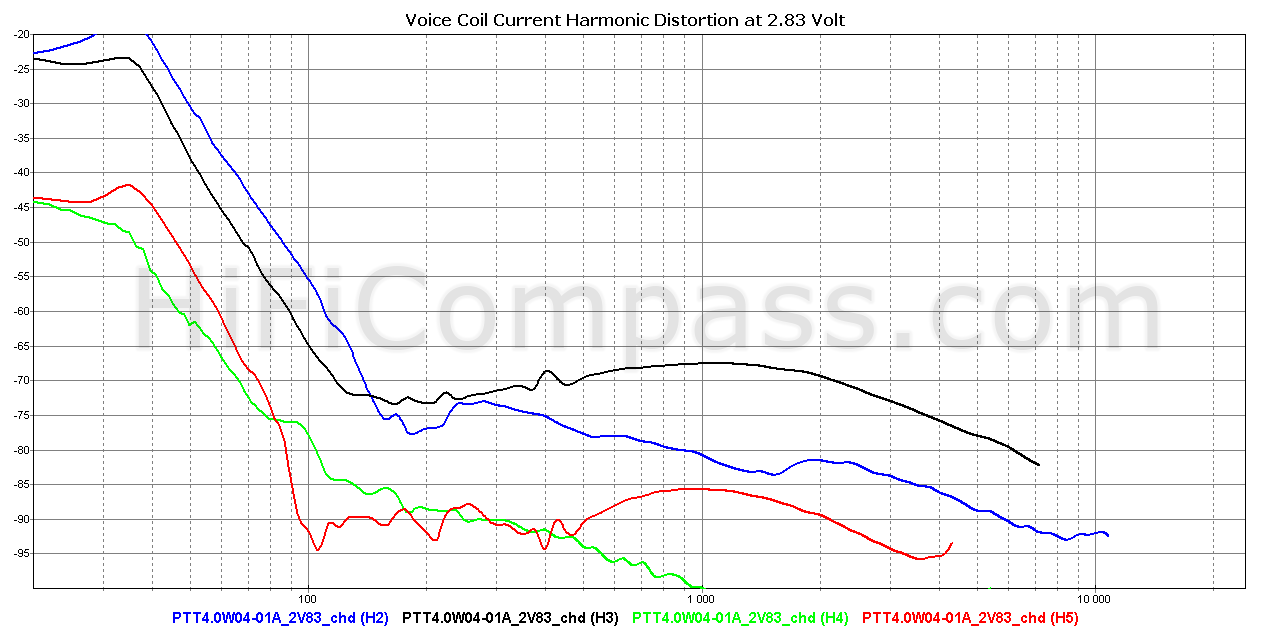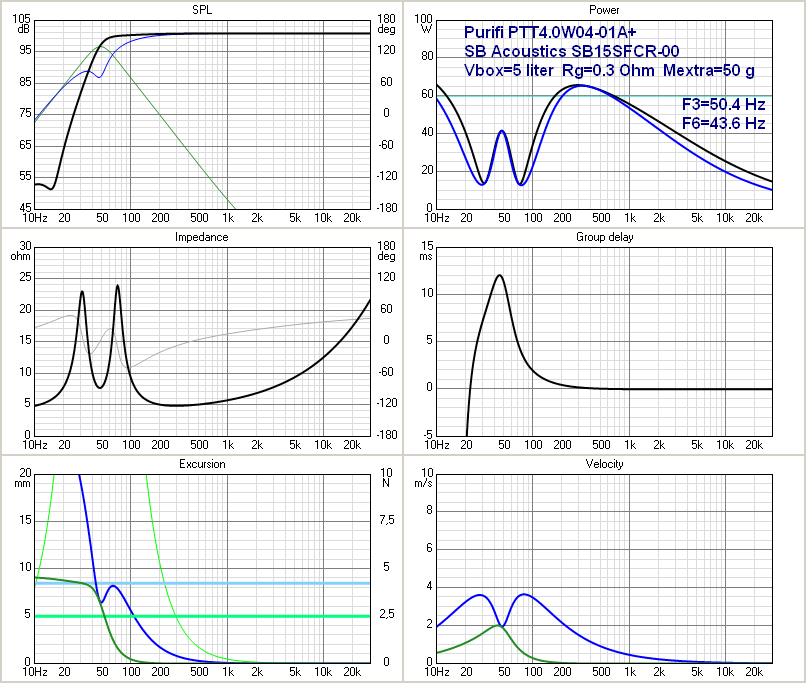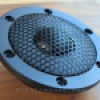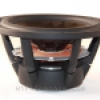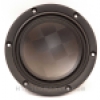HiFiCompass
Purifi Audio PTT4.0W04-01A midwoofer
What is on the test bench?
In this review we will get familiar with the second speaker in the model line of the Danish company PURIFI - 4-inch midwoofer PTT4.0W04-01A.
For many who are not very involved in the modern audio industry, but are somehow interested in high fidelity sound reproduction, PURIFI may seem like a new word. This is because the company only anounced itself last year when it debuted in Munich (Germany) with its first impressive performance products - the 1ET400A Class-D amplifier module and PTT6.5W04-01A woofer. PURIFI is a group of successful and internationally renowned enthusiastic audio professionals who strive to overcome existed technological barriers and create the world's best audio products. You can read the history of the company here.
In January of this year I published a PTT6.5W04-01A speaker review describing the design features, the applied engineering, and the unique performance proven by measurements. In their loudspeakers the Danes have paid primary attention to combating intermodulation and magnetic hysteresis distortions. I would like not to repeat myself here, therefore, in order to better understand the essence of the processes occurring inside the speaker driver I strongly recommend that you familiarize yourself with the previous review before further reading following material.
Why do we test this?
The first product of the company - the midwoofer PTT6.5W04-01A - turned out to be really extremely successful and over the past year it managed to attract huge interest and well-deserved recognition in DIY-comunity. There is an interesting thread about PTT6.5W based projects at diyaudio.com.
In early 2020 I also developed a two-way speaker based on a BlieSMa T25B-6 beryllium tweeter and a PTT6.5W04-01A midwoofer - PuriBliss-BeWg, which impressed me a lot. To my best knowledge at the time this article is published there are only the next commercially available projects based on this midwoofer:
- reference monitors made by Joachim Gerhard - Surveyor
- Purezza by Selah Audio
- studio monitors Baby Reds and Big Reds by Wayne Jones Audio
- DIY kit №1198 by Joseph Crow
Of course, after the first sensational product of the company, the launch of the second one is expected with even greater interest.
I would like to express my deep gratitude to the PURIFI company, as well as personally to its co-owner and developer Lars Risbo for the production samples of PTT4.0W04-01A speakers provided for testing.
What did the manufacturer state?
In October 2020 PURIFI updated the datasheets of all its products, including the 4 and 8 ohm PTT6.5W models too, with new types of measurements. When taking T/S parameters was used the new measurement method (using logarithmic chirp sweeps). This led to slightly different numbers in the datasheets.
- Negligible Force Factor Modulation and Surround Radiation Distortion
- Low Magnetic Hysteresis Distortion
- "Real" long-stroke performance: distortion remains low over full excursion
- Uncompromized midrange performance
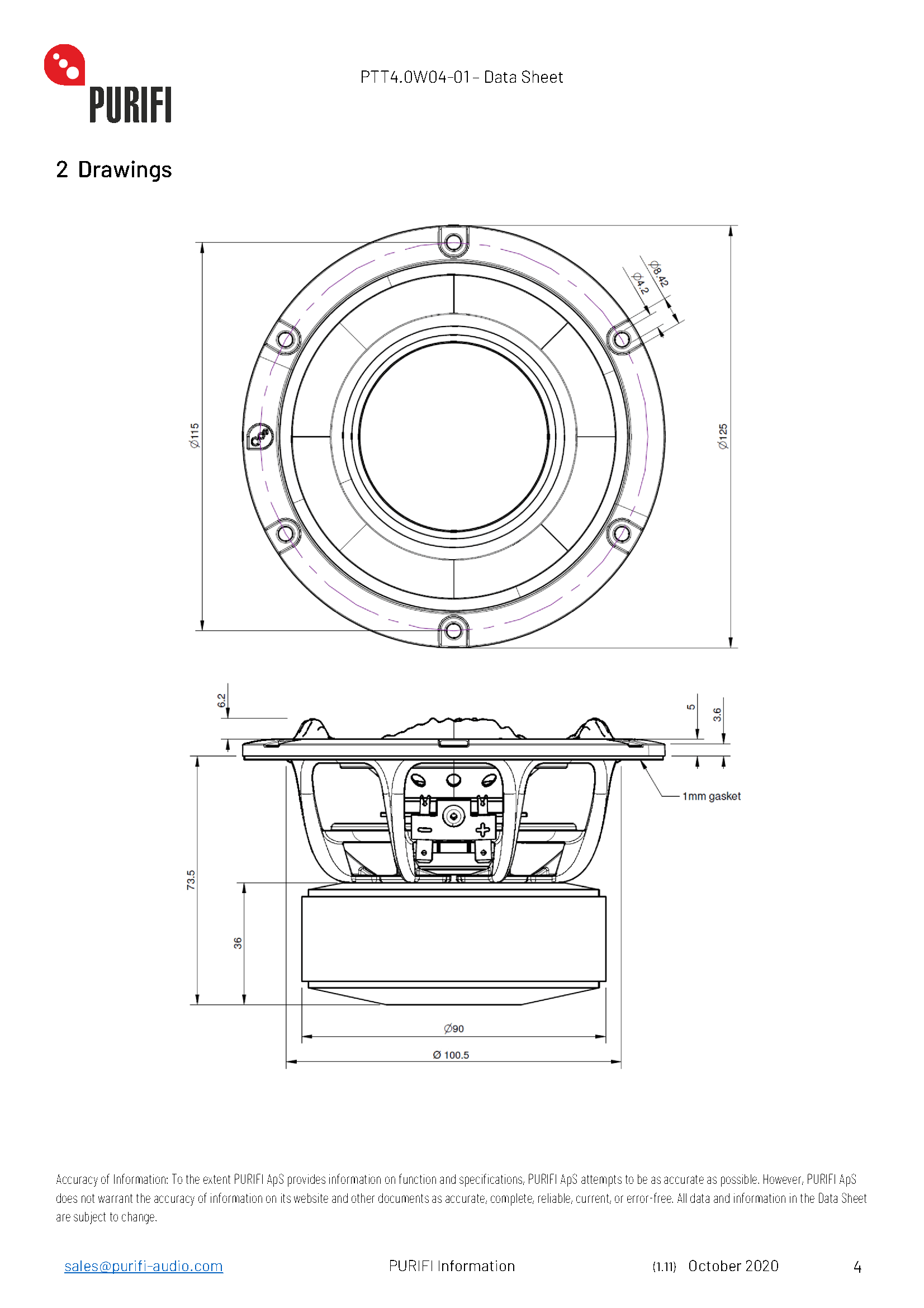 The datasheet is very detailed and contains all the technical information necessary for a developer, as well as additional diagrams that no one speaker manufacturer provides. These diagrams perfectly reflect the uniqueness of the speaker design and the achieved performance. The following parameters should be noted:
The datasheet is very detailed and contains all the technical information necessary for a developer, as well as additional diagrams that no one speaker manufacturer provides. These diagrams perfectly reflect the uniqueness of the speaker design and the achieved performance. The following parameters should be noted:
- A four-layer voice coil - for such a long stroke speaker with a heavy moving mass it is, probably, the only way to increase output by increasing the force factor (BL) of the motor while keeping Thiel-Small parameters within the limits of practical applicability
- An inductance of 0.38 mH - despite the four-layer voice coil, not that much in reality. It seems, they did not spare the copper in the motor
- Low sensitivity - 84.5 dB / 2.83 Volts * 1m. Yes, it's a little, of course ... The regular value for good 4 "midwoofers is usually not lower than 87 dB, but they have a linear excursion of only 3-4 mm, and here it is as much as 8.5 mm. PURIFI deliberately exchanged sensitivity per linear excursion in the speaker design in order to realize the full potential of the ultra-linear motor
- A linear excursion of 8.5mm (!) per side - is a very high value. It's a true long-stroke driver. Of all the 4 "midwoofers I know, I have met something similar only from Totem in their "Torrent drivers" series speakers, which I have heard in their "Tribe tower" speaker systems. I have not found any technical data on them, therefore, I have information only from a brief talk with their developer Vince Bruzzese. They have the Underhang motor design and the linear excursion of +/- 6mm
- A 21.6mm voice coil height with only 4 mm height of the magnet gap
- The moving mass Mms of 12.8 grams - it's a bit too much, of course, for a 4" midwoofer with claimed uncompromised midrange performance, but, as experience with its older brother PTT6.5W04-01A has shown when building PuriBliss speakers, stereotypes are successfully broken and everything is goodr with midrange. Small PTT4W04-01A should do it even better
Fig. 2 - shows the behavior of the force factor and the suspension stiffness depending on the voice coil displacement. If the stiffness curve is not surprising, then the almost flat dependence BL (x) deserves respect. Something is done right in the motor
Fig. 3 - the new type of measurements, which was absent for previous PTT6.5W04-01A. It reflects the dependence of the voice coil inductance on its position in the magnetic gap and frequency. Stunning linearity and full guarantee of no intermodulation distortion caused by inductance variation even at maximum voice coil excursions!
Fig. 5 - shows very low harmonic distortion in sound pressure
Fig. 6 - voice coil current harmonic distortion - above 100 Hz is very impressive, though there is nothing to compare this type of measurements with, no one manufacturer publishes this. But the fact of such a low level of distortion indicates a very good motor
Fig. 7 - the new type of measurements. It is the same as in Fig.6, but for different input voltages from 0 to 28.3 Volt
Fig. 8 - the dependance of 2nd and 3rd harmonics of SPL at fixed frequencies 125 Hz and 1 kHz on the input voltage 0 to 28.3 Volt. It's one more way to look at distortion depending on the frequency and signal level. At the sound pressure level of 100 dB, the 2nd harmonic does not exceed -48 dB, and the third is -43 dB at a frequency of 125 Hz. For such a baby, this is very cool!
Fig. 9 and 10 - another new type of measurements inspired, accortding to manufacturer, by my PTT6.5W04-01A review. These plots show intermodulation distortion for 30/255 Hz and 50/425 Hz frequencies combination. The level of side parasitic intermodulation frequency components is around minus 45 dB and minus 47.5 dB for frequencies of 255 Hz and 425 Hz correspondingly. That is very, very high performance!
Visual inspection
- Packaging - durable packaging made of harde glossy cardboard with two-color printing. Inside the box, the speaker is fixed with cardboard inserts around the basket and polyethylene foam around the magnet. The package also includes a self-adhesive foam rubber sealing ring
- Workmanship - all at the highest level. No traces of glue, scratches, dirt or dust, spots and dents on the cone, chips on the ferrite magnet, gaps and skewness anywhere. There is nothing to complain about
- The basket - is aluminum alloy diecast with black microtextural powder coating. Acoustically very transparent. It is fixed to the magnet system by glue and four screws.
An interesting detail - the basket base, which is attached to the magnetic system, has a form not like a continuous ring, as in majority of other speakers, but has cuts between the ribs. And the thing is that the solid basket base forms a short-circuited loop, which introduces asymmetry into the magnetic field at a large voice coil stroke, therefore it was made split. Even this seemingly small detail is given attention during development -
The top and bottom flanges of the magnetic system are made of metal and painted one in black - I believe, to improve heat dissipation, and another in red for an attractive visual appearance
- The magnet is of ferrite, nothing special
- The surround is very unusual. It is made of NBR rubber and in its shape resembles alternating mountain ridges. The four ridges look outward and another fours inward. The surround is absolutely symmetrical relative to the basket flange plane. This is the principle of PURIFI Neutral Surround - it is symmetrical, unlike conventional half-roll surround, due to which the effective radiation area remains constant throughout the entire voice coil excursion. In traditional half-roll surrounds the radiation area increases during the inward voice coile movement and decreases when moving outward, introducing additional nonlinearity. It's witty!
- The cone - is made of cellulose with addition of long synthetic reinforcing fibers. The cap is concave and made of the same material as the cone. The material is very tightly pressed and when tapped with a finger gives an echo, indicating a high stiffness of the membrane. The cone profile has a barely noticeable curvature, one can say almost straightforward. On the neck side the cone has some holes for ventilation the space under the cap
Another unusual detail is a stiffener with a triangular profile is glued along the entire circumference of the back side of the cone. Its made of the same material as the cone. This element significantly increases the cone stiffness and is designed to solve the eternal problem of suspension-edge-of-cone resonance - The lead wires are silver plated and connected to gold-plated terminals, pressed into a thermosetting plastic cage, which should not melt when soldered. The terminal block looks much more solid compared to the one in PTT6.5W04-01A
- The spider is made of BIMAX material. BIMAX is featured by its durability and increased resistance to mechanical stress. As a rule, it is used in top models of speaker drivers
- The voice coil former - is made of fiberglass. It is also a very popular non-conductive material, which allows to avoid additional losses from eddy currents, as in the case of aluminum formers, and to maintain high mechanical quality factor of the moving system
- The voice coil is visually very long, overhang type, four-layer, wound with a copper-plated aluminum wire and ... and this can easily be seen - having a variable winding pitch. It's a very rare technique. Apparently, this is also one of the secrets of obtaining the linearity of BL (x) and Le (x).
On the whole, due to the smaller and more rigid basket, as compared to its older brother, the PTT4.0W04-01A looks and feels like a kind of "tough boy", which is why it wins in tactile sensations. And taking into account the new terminal block and the red flange - my visual sympathies are clearly on his side.
Impedance frequency response
After the break-in Fs and Qts decreased and after 8 hours stabilized at the levels Fs = 39.03 Hz and Qts = 0.3162. These figures quite well match to the datasheet's ones.
The mechanical quality factor Qms was 4.78, which is even a bit higher than declared value of 4.5 and indicates very low losses in the speaker moving system.
The impedance curve is perfectly smooth across the entire frequency range, except for a small hump around 480 Hz. It's a very uncharacteristic frequency for problems to appear in a 4" midwoofer, usually something starts to happen much higher. After the break-in this hump slid down to 410 Hz. The most likely cause may be the resonance of the lead wires, the frequency of which decreased after softening. Despite the impedance hump presence, no parasitic traces of its manifestation were found both on the frequency response in the near field (20 mm) and on the diagrams of nonlinear distortion .
The impedance increasing at high frequencies is slightly higher than in speakers with two-layer coils and due to the higher inductance. This fact in itself does not matter much if it is possible to ensure the constancy of this inductance and impedance at any the cone position.
The impedance frequency response is a visiting card of a speaker and says a lot. In this case it says about a moving system with low losses and a perfectly balanced cone a good motor. Excellent!
On-axis frequency response
The measured average sensitivity in the range from 300 Hz to 800 Hz coincides with the declared one of 84.3 dB. The frequency response almost completely matches the datasheet, except for small deviations around 250, 400 and 800 Hz. These deviations are measurement errors due to the diffraction distortion of my measurement baffle. The diagram above shows the effect of the baffle edges on the measured frequency response for a specific mounting point of the PTT4.0W04-01A midwoofer. As you can see, the imprint from the baffle can be clearly traced on the measured frequency response. The error is small, no more than 1 dB. I draw your attention to this so scrupulously, because this midwoofer is worth to being looked "under a microscope".
The frequency response is very flat in the range up to 700 Hz, after which it begins to gradually decrease, falling at a frequency of 1.6 kHz by as much as 4 dB. After that, a smooth rise begins, ending with a resonant peak of the membrane at the frequency of 5 kHz. This peak is single, low Q, and smooth on both sides, so correcting it in a crossover won't cause any problems. It is quite noticeable by ear, so you will definitely have to fight with it.
By the way, the dip in the frequency response in the range of 900 - 2500 Hz should not be very frightening and may even be useful when a midwoofer operates in a real box with a narrow front panel. The first diffractive hump with a height of up to 3 dB usually appears in this range, which often have to be "cured" with an additional notch in a crossover. So, if you're lucky, you can get quite good autocompensation.
Thanks to the additional annular stiffener on the back of the membrane the typical problem of membrane edge/suspension resonance in the 2 kHz region is completely solved, as well as there are no signs of serious breakups.
As it may seem at first glance, the frequency response, although a little unusual, is quite smooth, without flaws and practically convenient.
Off-axis frequency responses (315 mm)
The off-axis frequency responses are as smooth as the axial one and decrease monotonically with increasing deflection angle. No hidden resonances were found. The off-axis behavior ensures that a midwoofer can be used up to a minimum of 3 kHz.
Harmonic distortion (315 mm)
Above are the diagrams of harmonic distortion at average sound pressure levels of 84 and 99 dB. In these diagrams we analyze the frequency range from 200-300 Hz and above. Much more accurate data from near field measurements (at 20 mm) need to be used for everything below.
Distortion rise in the 100-200 Hz range is caused by the resonance of the test baffle rather than midwoofer driver itself. The problem I've yet to overcome. There is no definitive opinion about the spike in distortion in the 240 Hz region. At first I had a suspicion about the resonances of the baffle, but subsequent measurements in the near field showed that something was happening in this range. By the way, when taking near field measurements I use different fixing technique of a speaker and much more rigid test baffle.
To say that the results of measuring harmonic distortion surprised me is an understatement. The new record is set, this is the lowest distortion for a 4 "midwoofer that I have encountered so far. The sound pressure level of 99 dB for such a baby is not a joke at all, and even at this pressure the average distortion level does not exceed 0.3% (-50 dB)!!!
I think that this speaker is more likely to burn out or burst into pieces before it can significantly distort the sound. Bravo!
Harmonic distortion (5mm - 20 mm)
Due to the peculiarities of the measuring setup, it is more correct to use the results obtained during measurements in the near field at a distance of 5 to 20 mm from a membrane to analyze nonlinear distortions of midwoofers in the frequency range up to 200-300 Hz. The diagram shows distortion at voltage of 8 volts.
I would rate the distortion level as "very low" for a 4 "midwoofer. The potential lower frequency limit of this speaker in a real loudspeaker is about 45-50 Hz and down to this frequency even at voltage of 8 Volts it holds up very decently. In a real world loudspeaker this corresponds to a sound pressure of about 91 dB / 1 m.
It just makes no sense to compare PTT4.0W04-01A with 4" competitors, therefore I compared its capabilities in the frequency range below 100 Hz at the same sound pressure with all 5" midwoofers available in my database. Only 5" SB Acoustics SB15NBAC/MFC/NRX-30 midwoofers could compete with it. In terms of harmonic distortion, they are about the same level. SB15 is slightly better above 60 Hz, while PTT4.0 is stronger below 60 Hz. In my opinion, this is an excellent result for a speaker with a membrane area of only 57 cm2 versus 82 cm2.
I have provided this example so that those who assembled two-way speakers based on different 5" speakers can imagine the lowest possible sound potential of tiny two-way speakers based on 4" PTT4.0W04-01A. At the same time I am still silent about intermodulation distortion and other delights of a midwoofer with a small membrane.
Intermodulation distortion
The intermodulation distortion measurement is one of way of analyzing device non-linearity. It is not an alternative, but an additional method and allows you to identify the spectral components of the inharmonious structure, which are much more harmful for high-quality sound reproduction and to which our hearing is more sensitive
There is a very good article of Bruno Putzeys - "Distortion, The Sound That Dare Not Speak Its Name", in which he very well describes the mechanism of the intermodulation distortion occurrence in a midwoofer, at second, an one interesting experiment that everyone can do. Its essence is the simultaneous supply of a musical signal to a midwoofer with a singing rather than speech (for better audibility of the effect), male or female vocals, or a violin, clarinet, flute, and sine signal with frequency of 30 Hz, the level of which can be adjusted. The sine signal causes a large cone excursion, which leads to the appearance of non-linearity of the suspension and the force factor. The suspension nonlinearity leads only to the appearance of harmonic distortions of the 30 Hz sine signal and does not affect the reproduction of midrange, while the modulation of the force factor leads to a change in the sensitivity of the speaker for midrange frequencies. This changing is manifested in the amplitude modulation of the voice notes with 30 Hz sine. Do such an experiment yourself and you will be very surprised at how much intermodulation distortion is heard and how they grow with an increase in the low-frequency component. Perhaps this will be a great discovery for you.
For testing I chose the frequencies of 30 Hz and 255 Hz. With this ratio (1: 8.5) the contribution of Doppler distortions is not yet dominant and the contribution of amplitude modulation can still be observed. In addition, this is a very realistic situation that occurs in both two-way and three-way systems. The measurements were performed for different 30 Hz cone excursions.
PURIFI PTT4.0W04-01A
Lars Risbo : Morten Holvarsen redid the measurements using a Klippel analyser and came to the same results. He also measured the excursion with the laser and it matches the theoretical within 1dB (there are also harmonics to the 30Hz that affects the excursion).
The remaining question is why we measure IMD below the Doppler limit. We have done a mathematical separation of the signal into AM and FM components and noted that the FM component is often higher than the sidebands in the raw FFT. This means that it looks like the AM and FM components can cancel out to some degree.
Voice coil current harmonic distortion
This new type of measurement, despite its simplicity, is an excellent tool for assessing the linearity of a speaker motor. The above diagram shows the frequency dependences of the 2nd, 3rd, 4th and 5th harmonics of the voice coil current at 2.83 Volts. The results are close to the datasheet.
Voice coil current nonlinearity is the direct nonlinearity of the mechanical force driving the speaker cone, since this force is related to the current by a simple relationship F = B * L * I, where B is the magnetic field strength, L is the length of the voice coil wire inside the magnetic gap and I is the current. So, in principle, it is practically impossible to obtain sound pressure distortion lower than current distortion in the frequency range where the contribution of the motional nonlinearity becomes insignificant (in our case, above 150 Hz).
Why is there a sharp increase in distortion below 150 Hz? I will cite the words of a speaker driver designer from personal correspondence:
Lars Risbo : The current distortion below 200Hz is dominated by the motional nonlinearity : the motion is controlled by the suspension (Kms(x) and Bl(x) ) and reflects the rising THD seen at low frequencies. The excursion drops with frequency squared and the 3rd harmonic drops with excursion in the second power. Consequently, the 3rd harmonic from the motion drops very fast with the frequency.
Above around 200Hz the distortion is dominated by the hysteretic distortion from the ferro-magnetic materials (iron) around the coil. This distortion would be the same if you glued the coil in the gap (ie non motional).
One finger print of hysteretic distortion is that the distortion ratio of the odd harmonics change very slowly with the level. This is why we also measure current distortion vs level to reveal these slowly changing distortion ratios.
One last comments to the voice coil current distortion vs frequency plot: around fs and when having a strong (low Qt) motor then the motion is velocity controlled (the cone velocity is servoed to follow the driving voltage). This means that the impact of the suspension nonlinearity to some degree is suppressed by this servo action (especially when having a very linear Bl(x)). This is exactly why the coil current has a distortion maximum around fs – the current reflects the force needs to correct the motion and there is most nonlinear correction around fs. This is of course a very geeky detail.
I would rate the current distortion level as "very low". To give this rate I made similar measurements for all the high-end speakers I own. There is no doubt that PTT4.0W04-01A and PTT6.5W04-01A have the best motors in the world today. In the coming days I will update at my website the previously published measurements of few well-known speakers with this new type of measurementss and you can see for yourself.
Step response
The step response shows excellent slew rate and fast falling. The returning to a start position is smooth. The oscillatory process at the top of the transient response is a time domain reflection of the frequency response resonance peak at 5 kHz.
Waterfall
The waterfall shows the same effects as a step response, in addition exposing hidden resonances that are difficult to see in other types of measurements. In this case, no side resonances, except for the main one at 5 kHz, are observed. As I already mentioned, the Q-factor of the resonance is not very high, so the ridge on the waterfall is not very long and after a time interval of 2.5 ms decreases to the threshold of its hearness.
Listening impressions
The sound of PTT4.0W04-01A is very detailed and transparent, more on the cold side than on the warm side. It is neutral, dynamic and contrasting, without any color. The sound signature seems to me closer to hard cone speakers, but it do not lose the timbre shades inherent for paper cone speakers. At the same time, the softness and "veil" of soft membranes are completely absent. PTT4.0W has a surprisingly low aerodynamic noise even with an amplitude of 10 mm at 30 Hz.
During the measurements, I flattened the resonance peak at 5 kHz and slightly corrected the slope of the frequency response. After that I carefully listened to several music tracks to test the midrange performance. I can say that despite the large moving mass for this size, the midrange reproduction is excellent. Very detailed, clear, transparent and natural. Cool!
"How to use" recomendations
Having seen the parameters of the preliminary announced PTT4.0W04-01A on the company's website in the spring, I thought for a long time what to do with this speaker and who needs it at all. 4 "midwoofer with a sensitivity of 84 dB ... Well, what is an application, except for desktop computer speakers or some kind of soundbar? However, get to know it better, I realized that this kid has serious biceps and its output is firmly promoting market philosophy of the company PURIFI, which I would call “Big sound out of a small box”. In contrast to the audio concepts of 50-60s, when large short-stroke woofers in giant boxes dominated the industry, the evolution of modern lifestyle, with the advent of miniature gadgets, along with rapid advances in electronics that made watts easily available and cheap (remember class "D" amplifiers revolution) could bring a brand new concept, where true "long-stroke" drivers such as PTT4.0W04-01A and PTT6.5W04-01A would allow to deliver a high-end sound in a very compact form.
The main purpose of PTT4.0W04-01A is to be used in highest class compact two-way loudspeakerskers. It can operate up to at least 3-4 kHz. The low frequency design, apparently, is categorically of the "passive radiator" type. If for PTT6.5W it is still possible to consider a "bass reflex" design, then for PTT4.0W the port tube will definitely not fit into the box. A quarter-wave resonator is possible, but all the charm of miniature acoustics is lost when from just 5 liters you miraculously can get a confident lower cutoff frequency of 50 Hz.
I have already said that midrange performance of this midwoofer is very good, therefore, it can also be used as a midrange speaker in a high-quality three-way speaker. In passive type loudspeakers this will not be very appropriate due to low sensitivity, except for the W-MM-T-MM-W configuration, but in an active system - you are welcome!
I found an inexpensive passive radiator that could be suitable for this midwoofer - SB15SFCR-00 and simulated a little in the VituixCAD program (once again, huge respect to the developers, the program is superb!). Below are the simulation results for a 5 liter box volume. The lower cutoff frequency at minus 3 dB is 50.4 Hz and the maximum sound pressure level at 50 Hz is 98 dB!
At last year's HighEnd-2019 in Munich, I thanked Crystal Cable company for the best 2-way loudspeakers at the show - Arabesque Minissimo Diamond. These are compact bookshelf loudspeakers based on the ScanSpeak 15WU/4741T00 5-inch midwoofer. I know this midwoofer very well and, despite the manufacturer's officially declares linear excursion of +/- 9 mm, things are not very good with distortions below 100 Hz. So, I'm wondering if the PTT4.0W04-01A can compete with it in a similar size loudspeakers?
I don’t know about you, but for myself I have definitely decided to build and test in the near future a super compact 2-way loudspeakers based on PTT4.0W04-01A.
PTT4.0W04-01A in a "Passive radiator" type enclosure
What is the price and where to purchase it?
You can purchase PTT4.0W04-01A in the Europe directly from PURIFI via their online web shop
On the North American continent in the online store madisound.com
The retail price is about (w/o VAT) $290/pcs
Summary
Testing confirmed a very close correspondence of all the measured parameters to the declared ones.
The measured characteristics let to classify the PTT4.0W04-01A as a 4" midwoofer of the highest class. In fact, today it is the world's best midwoofer in its class. If the concept of "Big sound out a small box" is close for you, then there is simply no better option to find. Bravo, PURIFI!
So, here is what I can highlight in the PURIFI PTT4.0W04-01A midwoofer:
- low sensitivity - 84.5 dB/2.83 Volt*1 meter
- very long linear stroke - 8.5 mm per side
- Really working PURIFI Neutral Surround technology
- Hard cellulose based fibers filled cone having no any serious breakups
- Very low harmonic distortion
- Very low motor air noise at low frequencies
- Excellent intermodulation distortion
- Very good craftmanship
- Can be used in 2-way loudspeaker up to the 3-4 kHz crossover point
- Except the high mass of the moving system (12.8 grams) there is nothing more to complain about
You can get more information about the measurement results here.
Yevgeniy Kozhushko/28.10.2020
CONTACTS
- Ukraine
- (+380) 95 904 7827
- hificompass@gmail.com
LAST NEWS
-
27 Mar 2025
-
04 Mar 2025
-
25 Feb 2025
-
10 Feb 2025
